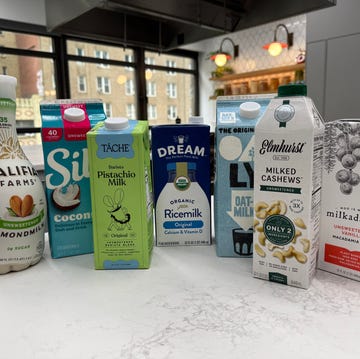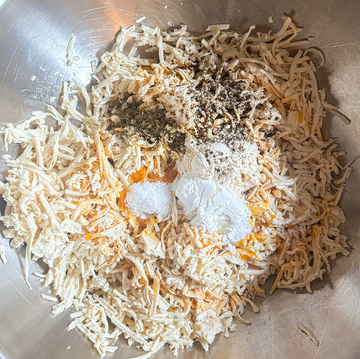1Crocodile Eggs
 Getty Images
Getty ImagesIf you can get to a crocodile egg before mama or papa sees you, then perhaps you can enjoy a croc egg or two. As shown by the brave Andrew Zimmern on the Travel Channel, some aboriginals in parts of Australia do eat crocodile eggs. They are taken from a few inches under the surface of the ground near a lake, where the parents are swimming around. In an episode of "Bizarre Foods," Zimmern and travel companions split a raw croc egg, proclaiming it "strong" and "fishy." No doubt one could boil a croc egg if given the time. Is it worth it? You will have to consult with your survival instincts on that one.
2Balut
 Getty Images
Getty ImagesThe Philippines — land of many adventurous treats! Balut, however, is only for the really, really brave. Also commonly served in other parts of Southeast Asia, such as Laos, Cambodia, and Vietnam, balut is a fertilized duck embryo that is boiled and eaten in the shell. As you might imagine, the result is a graphic snack not for the weak of stomach — or heart. Crunchy, because the bones are partly developed, and salty or spicy, depending on how one seasons it, balut can be prepared a number of different ways. Many people enjoy it in soups while others enjoy it fried in omelets. The world is your oyster, adventure seekers!
Advertisement - Continue Reading Below
3Duck Eggs
 Getty Images
Getty ImagesQuack, quack! Duck eggs used to be in fashion. What happened? Falling out of favor with crowds shortly after World War II because it was said they spread salmonella poisoning, duck eggs haven't really regained popularity. The duck egg, however, is easily comparable to a regular chicken egg, except the yolks are larger and higher in fat (i.e., richer).
4Emu Eggs
 Getty Images
Getty ImagesEver seen an emu up close? They're like ostriches, but more domesticated. Emus are native to Australia, but there are farms in the U.S. that raise emus primarily for their meat, oil, and, of course, eggs, which weigh in at about 1 1/2 to 2 pounds each!
Advertisement - Continue Reading Below
5Guinea Fowl Eggs
 Getty Images
Getty ImagesThe guinea fowl resembles a partridge, but it has a featherless head. Native to Africa, this little bird has been domesticated, so its eggs are edible and utterly sellable! Much smaller than the emu, the cooked flesh of guinea fowl has been said to match chicken in texture. The eggs are known to be harder to crack than regular chicken eggs, so you've really got to hit them hard. The eggs are slightly smaller than regular chicken eggs and have a pointier tip. They come out custardy and creamy, without, according to one aficionado, that "sulfur" smell common in store-bought eggs. Win!
6Gull Eggs
 Getty Images
Getty ImagesWhen you think of seagulls, you probably think of them crowding around you at the beach trying to get a bite of whatever you are eating. In England, however, gull eggs are gathered by licensed collectors. The season is supposedly only about four weeks long (sometime in April and May). It involves trips into wetlands and marshes to search for eggs that are under watch by protective parents. Interestingly, gull egg collectors only forage for one kind of gull egg: those from the Black-Headed gull. According to connoisseurs, the eggs are subtle and very rich.
Advertisement - Continue Reading Below
7Ostrich Eggs
 Getty Images
Getty ImagesIt's hard to miss ostrich eggs. The largest of all eggs, each weighs about 3 pounds, roughly 20 times greater than the weight of a chicken's egg. Most of the time they are cream-colored and have really thick shells. They are incubated by the females during the day and by the males at night. If the hatchlings make it through the nesting process, they live longer than all other birds. Are the eggs delicious? Well, they're readily available online and at certain supermarkets, so try them out! Here's what awaits you: more magnesium and iron, less cholesterol, and a little less saturated fat than the equivalent serving of chicken eggs. But a quick breakfast this is not! They can take up to 90 minutes to hard boil. And at about 2,000 calories per egg, you might want to invite your extended family over to help spread the calories around. Also on your to-do list: learning how to drill through that impossible shell!
8Pheasant Eggs
 Getty Images
Getty ImagesWhat pleasant little pheasants! These eggs are just fine for chowing down on, plus the eggs are richer than most. Often times they are served hard-boiled (like quails eggs) as a garnish with caviar — pure decadence! The final taste of the egg will, of course, depend greatly on whether or not the pheasants were free-range or caged.
Advertisement - Continue Reading Below
9Quail Eggs
 Getty Images
Getty ImagesQuail eggs, known as "tamago" in sushi and often found in bento lunches, are a delicacy in many parts of the world and less haute in others, like parts of South America, where you might find them on a hot dog. Perhaps most revered in China, where they have been used in healing recipes, quail eggs boast better nutritional values than chicken eggs. Plus, unlike chicken eggs, quail eggs aren't known to cause allergies.
10Turkey Eggs
 Getty Images
Getty ImagesTurkey eggs are fairly expensive to cultivate for human consumption. In addition, the feed that U.S. farms give to their egg-producing animals must be cleared by government agencies. That has been taken care of where chickens are concerned, but the same cannot be said for turkeys. Selling turkey eggs seems a bit tricky, but eating them, one supposes, would not differ much from dining on other eggs we mentioned. Those who have dealt with turkey eggs report thicker and tougher shells and shell membranes than those in chicken eggs.
Advertisement - Continue Reading Below
11Turtle Eggs
 Getty Images
Getty ImagesSince various species of sea turtles are endangered, eating turtle eggs is taboo in most places. Depending on the species, the mature nesting female brings herself ashore and finds a place in the sand to dig a hole for the depositing of a clutch of 50 to 200 soft-shelled eggs. After covering the eggs for incubation, she returns to the sea and leaves the eggs to hatch. If left undisturbed by any number of predators (from seagulls and jaguars to man), the little turtles may hatch, reach the ocean, and carry on. But beyond eggs, turtle meat and shells have found their way into markets (many of them black markets) in places that are mostly dependent on tourism. The future of the turtle remains unknown — it's not just the eggs that are at risk.
Advertisement - Continue Reading Below
Advertisement - Continue Reading Below
Advertisement - Continue Reading Below
























